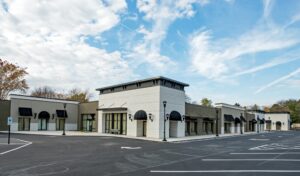Anyone who has waded into the throngs of travelers at the airport or fought to find a reservation near Disneyland this summer knows that the hospitality sector is back and almost as crowded ever. At the end of June 2022, the hospitality sector had survived the depths of the COVID-19 pandemic era and was within reach of the heights seen in 2019, according to Cushman & Wakefield’s Jeffrey Brown.
“We use 2019 as our baseline numbers,” says Brown, a senior managing director and national practice leader of Cushman & Wakefield’s hospitality and gaming valuation and advisory group. “If you go back to March 2020, hotel occupancy was 65% below that baseline. Now it’s about 3% below.
“In the past 18 months, we’ve passed the 2019 baseline in some ways. The average room rate actually exceeded the 2019 baseline beginning at about the midpoint of last year and is now significantly higher than in 2019.”
We are seeing a much stronger Monday through Wednesday travel period, which indicates it is business related.
– Jeffrey Brown, senior managing director, Cushman & Wakefield
Brown estimates that room rates averaged about $130 in 2019 but have risen to near $150 this summer. The change began last year when leisure travel came back stronger and faster than many experts anticipated.
“People call it ‘revenge travel,’ where everyone said, ‘I’ve got to get out of this house,’” Brown says. “That really drove last summer’s surge. Now everyone is expecting very strong leisure travel this summer.”
The speed of this comeback, however, may be only one of a number of surprises that have developed as the hospitality sector appears to be taking flight. Business travel, in general, was expected to take years to recover to pre-pandemic levels, and renowned business experts such as Bill Gates predicted that 50% of business travel would disappear permanently. These dire predictions haven’t happened yet. Industry analysis is showing that both business and business-related group travel, such as conventions and events, are on the road to recovery, Brown says.
“We are seeing a much stronger Monday through Wednesday travel period, which indicates it is business related,” Brown says. “And some of the urban centers such as San Francisco, Boston and New York City have gone from being about as bad as it gets for hotel occupancy, and lagging the nation as a whole, to being some of the strongest performers.”
Biran Patel, a senior vice president and national hospitality director for Marcus & Millichap, agrees that business travel is recovering. Recent surveys, he says, show that 70% of meeting planners forecast an increase in the number of bookings for the remainder of the year — an optimistic sign.
Another surprising aspect of the healing hospitality sector is that smaller submarkets have recovered faster than major metros. Through the first five months of 2022, Patel says that smaller metro areas are reporting higher occupancy rates, average daily rates and revenue per available room compared to 2019.
“If it’s Knoxville, Tennessee, or Sarasota, Florida, or Tulsa, Oklahoma, maybe you are traveling to see family or taking a short vacation by car, or even a staycation,” Patel says. “Whatever the reason, you are going to stay in a hotel. I think that has improved some of these secondary or tertiary markets.”
A third revelation for hospitality is that the consolidation that many observers expected during the pandemic never really materialized. Over the past two years, there had been warnings that a wave of hotel bankruptcies were on the horizon and that the industry would go through a phase of upheaval. But the doom-and-gloom prognosis didn’t come to pass.
Sure, there have been some acquisitions, such as the megadeal this past June in which Choice Hotels International bought Radisson Hotel Group Americas. The $675 million acquisition involved more than 600 properties. But that was a unique and complex deal. According to reports, one reason for the sale was that Radisson (which is owned by a Chinese conglomerate) was trying to disentangle itself from political conflicts.
“My opinion is that there has been some consolidation,” Patel says. “Maybe it is not at the level we envisioned or anticipated, but it is happening.”
Brown believes a combination of factors — including the return of leisure travel, as well as federal government support such as enhanced unemployment payments and the Paycheck Protection Program — kept the sector from heavy consolidation. Brown estimates that hotel transaction volumes are back to 2019 levels on a dollar-volume basis.
Looking to the future, there are many headwinds for the sector, including labor shortages. This past May, U.S. labor statistics revealed that jobs in the leisure and hospitality sector were down 8% from February 2020. That is 1.3 million fewer workers. Patel says that hotel costs are increasing as the industry competes with restaurants and other businesses for labor. Still, the long-term outlook is bright.
“It’s a very interesting time from an investment standpoint,” Brown says. “The takeaway is that the health of the underlying hotel business is continuing to improve. … At the same time, higher capitalization rates mean lower values, and higher debt costs because of rising interest rates means more difficulty in making deals work.” ●








